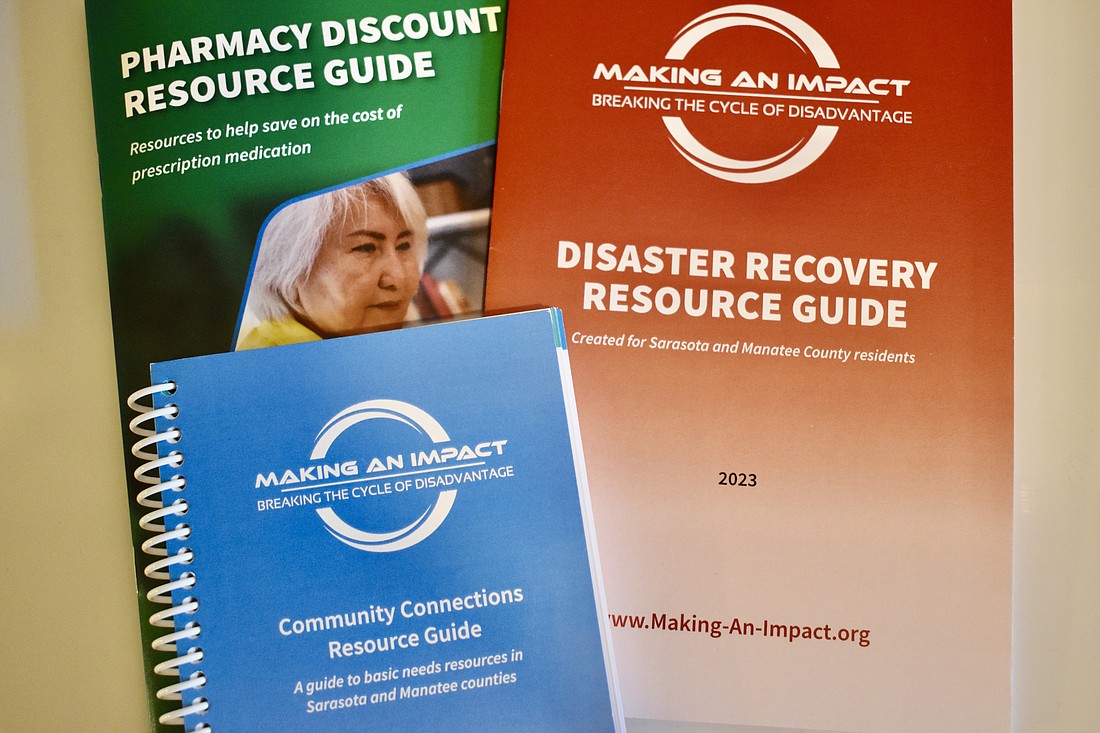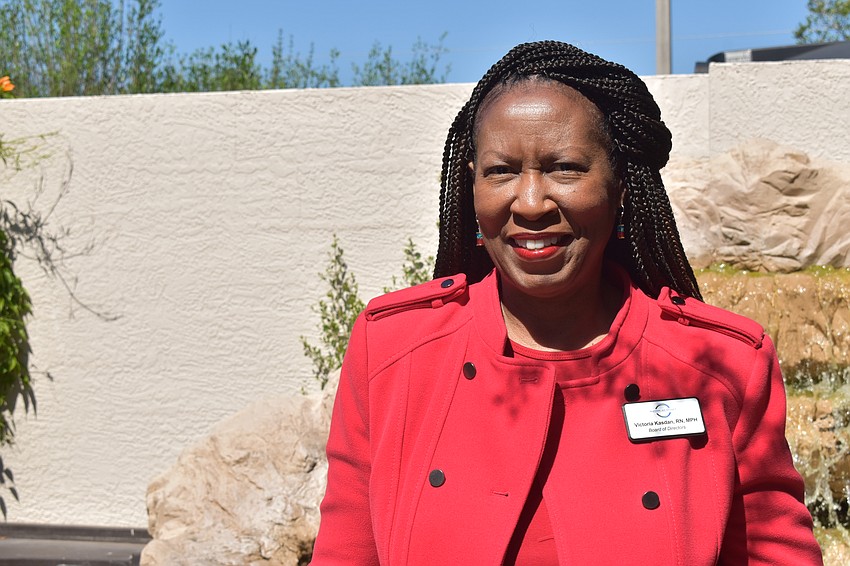- May 3, 2025
-
-
Loading

Loading

Manatee County Sheriff Rick Wells was the first person to place a bulk order for Making An Impact’s Community Connections Resource Guide.
The nonprofit can only afford to print 1,500 a year. Since a special reprint was needed to fill the order, the Sherif Office’s star logo was added to the reference guides containing information on over 300 organizations that provide assistance to residents in Manatee and Sarasota counties.
“Every day our deputies come in contact with people who have needs beyond what we as a law enforcement agency are equipped to handle,” Wells wrote in a testimonial. “It’s great to have the ready reference guide with a list of resource programs and organizations that can provide additional services.”
In the midst of the COVID-19 pandemic when many Americans were on their sofas binge watching “Tiger King,” Victorian Kasdan spent her free time on the phone finding the right people and making a plan.
Kasdan is the former executive director of We Care Manatee Inc., a nonprofit that provides free healthcare to uninsured, low income residents. After transitioning her career into consulting, she found herself searching for something like the Community Connections Resource Guide on behalf of a client.
The only guide she found between Sarasota and Manatee counties was one that Turning Points produces for its homeless clients in Bradenton, but it only covers the surrounding service area, not the entire county.
During her search, the Community Foundation of Sarasota County connected Kasdan with Linda Hoy, a retired CPA volunteering her time at Bayside Community Church. Hoy had compiled a list of resources in a handwritten notebook that Kasdan described as being as big as a phone book.

Hoy had contacted the Community Foundation of Sarasota for help putting her notebook to use. She knew the information could be an asset to other helpers in the community, but she didn’t know what to do with it.
At first, Kasdan only contacted Hoy for her clients' benefit. As her consulting clients dwindled at the start of the pandemic, Kasday contacted Hoy to do something bigger with her notebook.
The pair formed the nonprofit Making An Impact and went to work in April 2020. The first resource guides were printed that August.
The guides focus on basic needs. The resources are split between 17 categories including addiction, employment, housing, food assistance and mental health services.
Wells has about 120 deputies on staff, and found the guides so useful that he told Kasdan he would be sharing them with staff members who work with inmates being released and agencies his office works closely with like Hope Family Services, a domestic violence center.
Making An Impact also gives some guides away to individuals through outreach events in low-income communities.
“The guides were originally intended to give to those who help others,” Kasdan said. “That’s how we figured as a small group we could have a bigger impact. They see hundreds and thousands of people in whatever they do.”
Whether that means contact with a domestic violence center or homeless shelter, Kasdan said nine times out of 10, people need additional services.
When Hurricane Ian hit, Making An Impact created the Disaster Recovery Resource Guide, which was printed and distributed only two weeks later, along with cards and posters that contained a QR code.
Both the basic needs guide and disaster guide can be found on the nonprofit’s website. The searchable web app is available in over 20 languages and can search for services according to the user’s location.
The nonprofit is currently launching a Pharmacy Discount Resource Guide, too.
“Medications are very expensive,” Kasdan said. “This one covers where you can get discounts – discount cards, coupons, foundation programs, government programs, online pharmacies and retail programs.”
The guide also includes educational information, such as how to spot an online pharmacy scam.
Making An Impact currently has seven volunteers, three of who work directly on the guides. The nonprofit is seeking sponsors to hire a staff person and support the operational expenses.
“The guide cost of $8 helps (the disaster guide costs $6), but even at that price, it doesn’t cover all our expenses,” Kasdan said. “Our board members donate, and we apply for grants. Our biggest challenge as a small, all volunteer organization is that demand for our service exceeds our financial and human capital resources.”
The guides are updated every year, and organizations can also apply for grants to purchase them.